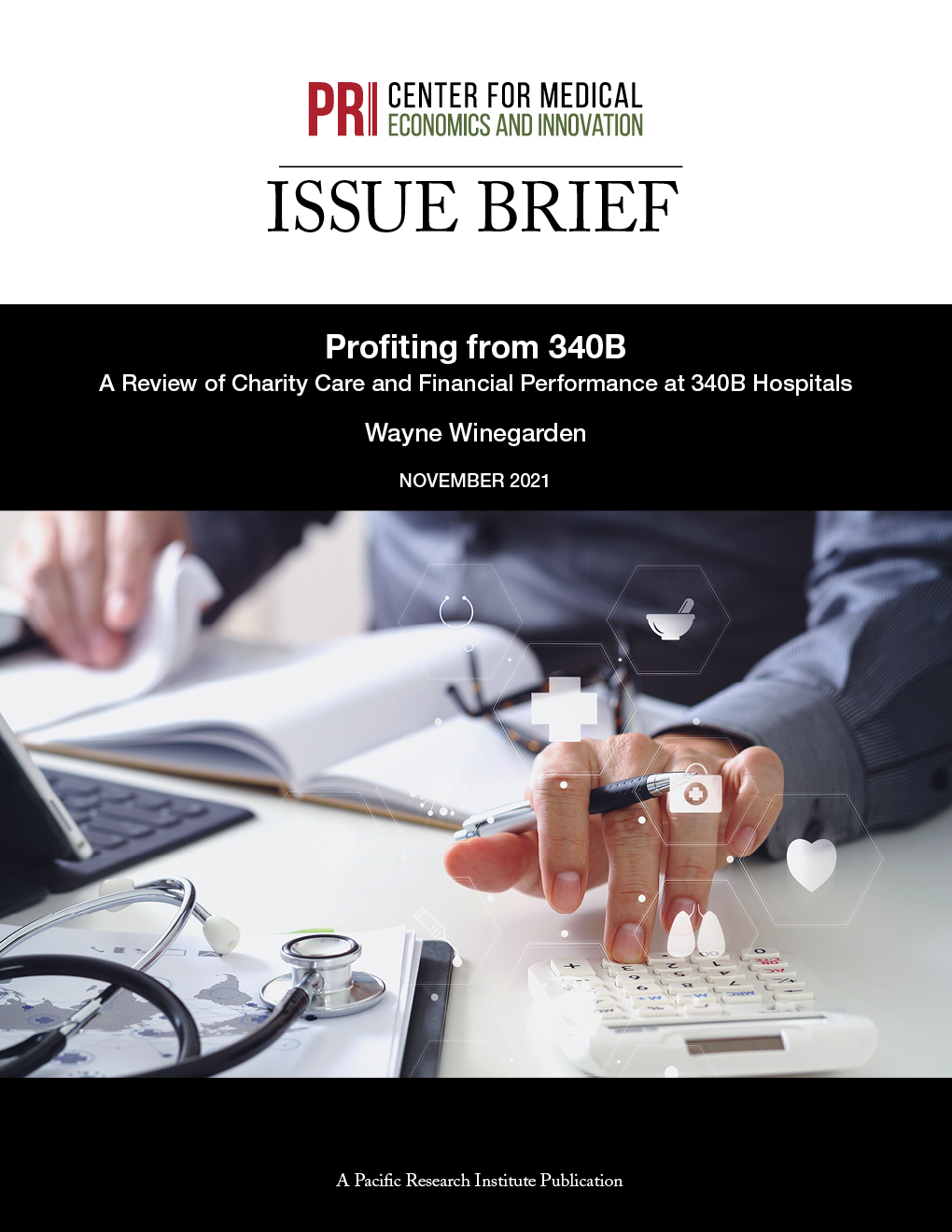So-called 340B hospitals whose mission is to help the vulnerable are more profitable and provide less charity care, finds a new brief released today by the Center for Medical Economics and Innovation at the nonpartisan Pacific Research Institute, a California-based, free-market think tank.
Click to download “Profiting from 340B”
“The 340B program is supposed to help vulnerable patients receive their medicines, but our study shows that 340B hospitals are more profitable than traditional hospitals while not providing more charitable care,” said Dr. Wayne Winegarden, director of PRI’s Center for Medical Economics and Innovation and the study’s author.
The 340B program is named for section 340B of the Veterans Health Care Act of 1992 and is administered by the Health Resources and Services Administration (HRSA). It was designed to provide discounted drugs to improve vulnerable populations’ access to medicines. Participating manufacturers provide qualifying clinics and hospitals discounts up to 50 percent or more off the costs for outpatient drugs, otherwise their drugs will not be covered by Medicaid.
In “Profiting from 340B,” Winegarden found that 340B hospitals tend to provide less charity care while still providing these institutions with a very profitable revenue source. The paper analyzes data provided to the Center for Medicare and Medicaid Services (CMS) by hospitals along with financial data provide by hospitals on their IRS 990 forms for a sample group of 340B hospitals. Among its findings:
- Hospitals in the CMS database provided 2.03 percent of net patient revenues toward charity care in 2017, compared to 340B hospitals providing a small 1.66 percent.
- Evaluating each hospital’s net income relative to net revenue, the profitability for 340B hospitals was 37 percent larger compared to the average of all hospitals.
Examining the IRS financial data of a group of 25 340B hospitals in eight demographically and geographically diverse states, Winegarden found:
- The sample 340B hospitals provided even less charity care and were more profitable relative to both the average hospital and average 340B hospital.
- Profits at the sample 340B hospitals grew 9.1 percent annually, compared to 2.5 percent growth at hospitals and nursing homes according to federal data.
More troubling, the sample group of 340B hospitals maintained 54 contract pharmacies, compared with an average of 20 contract pharmacies for the average 340B hospital, further evidence that the problem of diverting discounted 340B medications to non-340B eligible patients is worsening. This enables 340B hospitals to receive duplicate discounts from both Medicaid and the 340B program – which are prohibited – without offering the 340B discounted price to uninsured patients.
“Policymakers must act to reform the 340B program and end the unwarranted subsidies for the large hospitals, while ensuring that vulnerable populations receive the help they need to afford life-saving medications,” concluded Winegarden.


